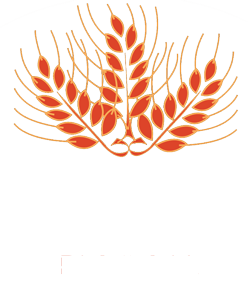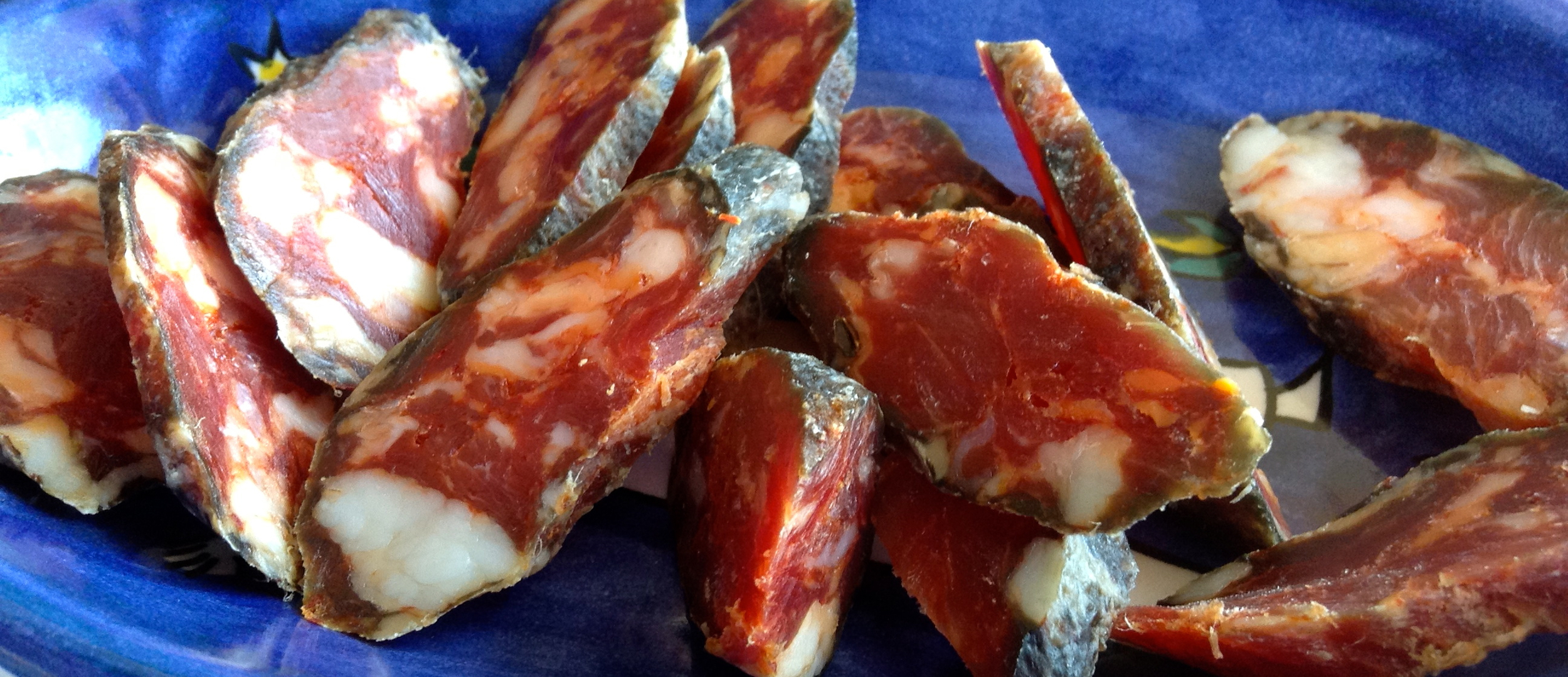It’s December. The ground and the trees are bare. Here in the Midwest we freeze with the weather. We bundle up and breathe icy air through our scarves and outerwear. But there is an upside! It’s holiday season, which means the chance to imbibe with delicious Italian wines, the fruits of which come from fall harvests completed over many Septembers and Octobers.
This past autumn I went to Italy for la vendemmia, the harvest period, starting with a quick visit to the Gargano and my “genitori di cuore” whom I have previously described as my Italian father and mother. Giovanni and Sparta, at 85 and 83 years respectively, have been making wine since their youth. I arrived on time to lend a hand, as the grapes were ready. Like in many parts of Italy, the family harvest yields enough wine to be shared over the course of the year with friends and family. For Giovanni and Sparta, circa 400 litri.
In Castel di Sasso, just east of Napoli, it was still too early to pick Casavecchia, an ancient grape varietal. The legend of this wine (according to winesearcher.com) is that a single vine, 15 inches in diameter was discovered among the ruins of nearby Pontelatone. Cuttings were taken to graft new vines. By analyzing it, Casavecchia (“old house”) was identified as Trebulano, a Roman grape varietal previously thought to be extinct. This long forgotten varietal has come back to life in the last twenty years, and we are thrilled to have it on our menu.
Grapes were ready to harvest at Terre del Principe in Castelcampagnano. There, I observed the "campionamento dell’uva” with Peppe Mancini of Terre del Principe. The campionamento helps determine when grapes are best harvested. We walked the vineyards (Mascioni, Piancastelli, Monticelli and Sasso), hand clipping bunches of grapes in an orderly, but random, manner. Random selection is important as grapes within clusters do not all ripen at the same time. They are hand crushed, then tested for sugar and acidity levels. These markers guide the wine maker, indicating alcohol content and taste profile. Pallagrello was ready and so was Aglianico.
Complimenting this harvest focus, were wonderful leisurely lunches with Peppe and Manuella Piancastelli, the Lombardi of the agriturismo Le Campestre, Nicola Trabucco and family, and on the water in Bacoli (Na), with Domenico Mazzella. One afternoon, I made a mozzarella run with Mimmo la Vecchia of Casoficio Casolare to the towns of Caivano, Frattamaggiore, Frattaminore, Sant’ Arpino, Succivo, Orta Di Atella, Caserta, San Leucio and Alvignano.
Further north near Monte Massico, Nicola Trabucco, the dedicated oenologist and agronomist I wrote about in May of 2013 works the land. My travels with Nicola are always fun and educational. In the land of Falerno, the most famous wine of the Roman Empire, we picked grapes and walked among the 500 year-old chestnut trees in the Bosco di Castagne in Roccanmonfina. By chance, in the area of “Sei Moggia” (six bushels), we came upon a flock of sheep slowly moving along a narrow road deep within the trees. We were stopped in our tracks by this magical moment. The quiet was punctuated by the shepherd’s call, the bells ringing in time with their footsteps. The dust they softly kicked up sparkled in the filtered light.
I never tire of listening to Nicola speak of wine, planting grapes, the local agriculture, and the millennial history of the surrounding volcanic territory. Nicola’s father, Ciro, was born on the land in a house dating back to 1560. Ciro cultivated peaches, apples, apricots and cherries, and had difficulty understanding why his young kid wanted to make wine. Now he understands and is quite proud of Nicola. We visited the vineyards of two of Nicola’s favorite productions, Black Magic (Falerno Del Massico Aglianico) and Rayan (Falerno Del Massico Primitivo).
Nicola’s love of the land and its volcanic attributes is impressive. He has an “indissoluble link” with this green, fertile mountain and its olive groves, vines, and Mediterranean brush. For centuries it has been a refuge and provided sustenance for those who have dwelled on these hillsides.
One of the most beautiful references to the meaning of land is in a poem by A. Luigi Veronelli, celebrated Italian gastronomist, wine critic, and intellectual. It is from the Terre del Principe website:
“La terra, la terra, la terra, la terra, la terra…all’infinito la terra, il mio lavoro consiste nel camminare le terre e nel racontare la qualita, la terra e l’anima…
The land, the land, the land, the land, the land…The land at the infinity, my job consists in walking lands and telling some of the qualities, the land is the soul.”
As I further my understanding of wine, so with pizza. In particular, how Pizza Napolitana and Pizza Rustica differ. I love asking the question. I queried Manuella Piancastelli (Azienda Terre Del Principe), Liliana Lombardi (Agriturismo Le Campestre), Angela Papa Trabucco (Nicola’s mother) and Vincenzo Di Meo (Azienda La Sabilla). Their responses follow in order.
Manuella explained the differences between pizza napoletana “classica “and pizza rustica. One is made in the home (rustica); the classica is a take away version. People in the city did not have wood burning ovens in their homes as those living in the countryside. The pie in the city was open faced, then folded over once or twice; called “libretto,” as in a book. The ripieno of the countryside is a filled pie that is closed; either folded over and pinched shut or one layer of dough covering over another with ingredients inside. The city pie was made very quickly for the “mangiavone” on the street “a portare via” (to take away) their food. Eating within the pizzeria at a table was for the wealthy, the Borghese. Only in recent years has this changed. The ingredients used for the ripieno (rustica) were typical of the countryside, escarole, prosciutto, salumi, cheeses. In the city, tomato, oils, herbs, mozzarella, fish. Manuella made a final point regarding the impasto (the dough), itself. In the city, flour and water. In the countryside, flour, water, egg, sugna (animal fat), and occasionally sugar to make the dough pastry-like (“mezzo frolla.”)
Characteristic of the many meals I have enjoyed over the years with Liliana Lombardi of Le Campestre in Castel di Sasso, including their Casavecchia wine, is that the fruits, vegetables, herbs, eggs, meats, salumis and cheeses they eat and offer to friends and guests are from their land. Following this fresh and natural approach and in the ways of her grandmother, Liliana makes a “ripiena” with prosciutto, eggs, pecorino, asparagus and other vegetables. She uses crecito, a natural rising agent, with farina integrale, “farina povera,” for her dough. The slow rise of the dough is typical of the countryside. The impasto with crescito stays good for a week. Years ago, the crescito was fresh because every day someone was baking. The crescito would be passed from one family member’s household to another. Today, there are fewer family members and less baking. The crescito is kept in the fridge, and then taken out the day prior to bring it back to life from its dormancy.
Angela Papa, Nicola’s mother, also spoke at length about the crescito, of it being natural, “antica.” She complained that the various forms of commercial yeast (lievito di birra) used today impart minimal flavor and lessen the life span of the dough. Her impasto with crescito can last 15 days. Typical ingredients in Angela’s ripieno are escarole, beans, and artichokes. Though the understanding ofcriscito and lievito madre (mother yeast) may differ from region to region and from person to person within the region, there is agreement that dough with natural starters result in a better product in that they are more flavorful, are easier to digest and easier to extend. Someday I would like to experiment with a mother yeast, just for fun. We do, however, incorporate into our practice the use of “old dough” to foster flavor and fermentation. This brings to mind a conversation I had long ago with Roberto Caporuscio, Antonio Starita, Antimo Caputo and Sergio Miccu to be careful with “the mother.” It is unpredictable. It is alive and takes great skill to nurture and direct.
87 year-old Vincenzo Di Meo is the third of five generations of the Azienda La Sabilla in Campi Flegrei. I met him a year ago when I first visited the family with our friend “Mimmo” Mazzella to taste their Falaghina and Piedirosso wines. Vicenzo’smemory of cooking years ago was that it was healthier, more economical, and more flavorful. It was labor intensive, “ma ieri non costava;” but it did not cost much. He remembers especially that pizzas (rustica) were cooked perfectly, never dried out or burned. A typical recipe of Baia, his village, was called “pizza zellosa.” On Saturdays, his mother went to gather herbs and “cardillo” (a wild endive), and then she boiled them. The next day, Sunday, she would prepare a slurry with cornstarch, which was tougher and more elastic than a polenta. She would line a pot with the dough, then fill with herbs, the wild endive, other vegetables, and herring. The she closed it with another circle of dough covering it with lemon leaves and cooking it in the hearth in a coal fire. The pot, immersed in the ashes, needed to be turned constantly so as not to burn or dry out the dough. The method required great skill and total dedication; she could never get away from the pot. The result was a stuffed pizza almost 10 cm high with a fully polished surface like the head of a bald person. In fact, in the Neapolitan language, "zelloso” means no hair.
Unfortunately, I left Caiazzo before Franco Pepe and Gabriele Bonci (Pizzarium Bonci, Rome) hosted “la Maratonna Della Pizza at Franco’s pizzeria, Pepe in Grani. “For twelve consecutive hours, mezzogiorno a mezzanotte, two masters, un pizzaiuolo and un panatierre, met and improvised. Though different in their styles and baking techniques, their commitment to research, experimentation and use of territorial products is the same. (gusticampani.blogspot, Davide Ricciardiello). Also in the mix were regional cheeses (Lazio and Campana), eclectic wine pairings, jazz music, and celebrating Pepe in Grani’s first anniversary.
Before returning home I went to Villa Dora in Terzigno with Mimmo to taste Lacryma Cristi (Tears of Christ) once again. We have introduced their red and white wines, and will soon have their olive oil. Situated in the shadow of Vesuvio, which has erupted every fifty to 100 years for about 2000 years, the soil is mineral rich and laden with magma and cenere (ash), which strongly influences the taste profile of its wines, olives, olive oils, tomatoes, apricots, and other fruits.
We are adding the natural wines of two other producers to our wine list. Frank Cornellisen from Sicily’s Mount Etna, uses amphorae to mature the wines and crushes the grapes by foot. Arianna Occhipinti makes natural wines in Sicily, such as Frappato. There are no additives in either of these wines. The Cornellisen and Occhipinti wines are clean, simple, and fresh. Perhaps another reason I like these wines so much is because they remind me of the wines I so often drink with Giovanni and Sparta, which is where my love for southern Italian wines really started.







































